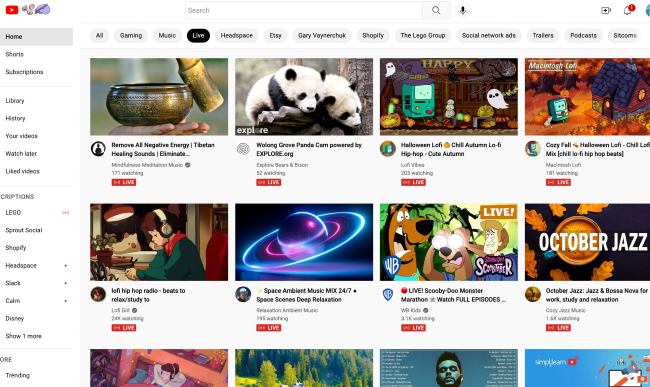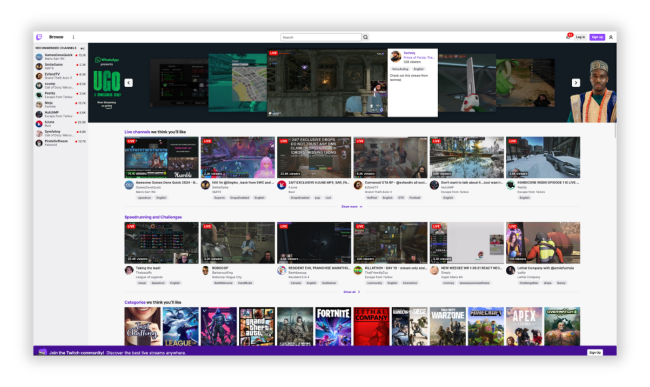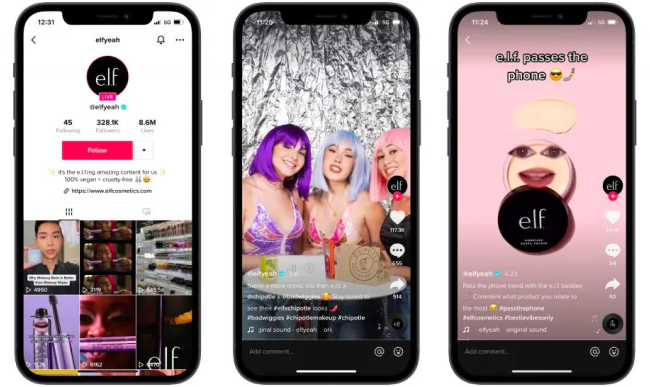7 Best Live Streaming Apps in 2024

Live streaming is one of the most popular forms of entertainment and content creation today, with nearly 25% of all video content watched worldwide dedicated to livestreams. This growing interest has spurred an increase in live streaming apps, offering a variety of features for creators and viewers alike.
With so many options available, how do you choose the best live streaming app? To assist you, we’ve sorted through the choices and compiled a definitive list of the 7 most popular live streaming apps in 2024, based on downloads and ratings from our website. Whether you’re looking to create engaging content or simply enjoy watching live broadcasts, these apps stand out for their reliability and user satisfaction.
Source: Conviva State of Streaming 2021
What is a live streaming app?
Here are three categories of live streaming apps based on their functionalities:
1. Social Streaming Platforms
These are platforms where users can both watch and share live streamed content. They often have community features that allow interaction among users.
Examples: YouTube Live, Twitch, Bigo Live
2. Content Creation and Embedding Apps
These apps focus on allowing users to create and embed live content onto their websites or provide branded solutions for businesses. They may not have social features but are geared towards professional or specific content delivery.
Examples: StreamYard
3. Companion and Enhancement Apps
These applications enhance the live streaming experience by providing tools for better content creation, audience engagement, or streaming management. They often allow users to stream to various platforms through their interface.
Examples: Streamlabs
These categories highlight the diverse functionalities of live streaming apps, catering to different needs and preferences in the streaming landscape.
How to choose a live streaming app?
Let’s say you’re a new creator looking for a live streaming app (or apps). With so many options available, the choice ultimately depends on your goals, audience, and content. For instance, if you’re a fashion blogger aiming to grow your audience, your needs will differ from those of a boutique trying to sell products and generate revenue through live videos.
To help you navigate this landscape, let’s explore 7 of the best live streaming apps in 2024, comparing their features and functionalities. This will give you a clearer idea of which platform aligns best with your specific objectives and audience engagement strategies.
🌟7 of the best live streaming apps in 2024🌟
1. YouTube Live
YouTube is undoubtedly one of the most popular video platforms globally, boasting over two and a half billion users. Anyone can sign up for a YouTube account, enabling creators to livestream or upload recorded videos from a computer or mobile device. With countless categories of video content available, YouTube serves as a versatile platform for nearly every type of content creator, from gamers to educators to vloggers.
As the second-largest search engine in the world, YouTube provides a significant opportunity to reach audiences genuinely interested in your content. However, it's important to note that the majority of content on YouTube consists of video on demand (VOD), rather than livestreams. While YouTube offers numerous advantages, such as extensive reach and robust analytics, there are also downsides for streamers, including the challenge of standing out in a crowded space and managing live chat moderation during broadcasts.
Pros ✅
- In-depth analytics and reporting
- Massive audience and robust search algorithm
- Integration with Google means that YouTube videos show up in Google search results
- YouTube Partner Program offers built-in monetization tools like Super Chat, Super Stickers, and channel memberships
- Capability to share long-form and short-form videos on the same platform
- Ability to archive previous streams and videos on demand
Cons ❌
- Live content isn't the platform's priority
- YouTube controls who advertises on your content
- It can be hard for new creators without an established audience to get noticed on such a huge platform
- Membership in the YouTube Partner Program (i.e., monetization) requires 1,000 subscribers and 4,000 hours of watch time
Uses💡
- News
- Gaming
- Sports
- Live vlogs
- Interviews
- Product announcements
- Tutorials
- Webinars
- Everything in between
2. Facebook Live
Like YouTube, Facebook is a vast platform that offers significant opportunities for live streaming, boasting over three billion monthly users as of 2024. It allows creators to share both longer videos and short-form content through features like Reels and Stories, making it versatile for various content types. Streamers can broadcast from desktop or mobile devices to a professional page, personal profile, or Facebook group, enhancing audience growth and engagement. This flexibility fosters real-time interaction and community building, enabling creators to connect with their viewers in meaningful ways.
Pros ✅
- Prioritized live content: Followers are notified when you go live
- Built-in chat moderation settings
- Real-time livestream performance analytics
- Monetization from in-stream ads
Cons ❌
- Maximum livestream length of 8 hours
- No content indexing, meaning that Facebook Live videos don’t appear in search engine results
- Complicated interface
- Limited community engagement tools
- Streaming in HD is restricted to members of Level Up (Facebook’s gaming creator program) and managed partners
Uses💡
- Gaming
- Live shopping
- Live events and performances
- Industry updates
- Live Q and As
- Product announcements
3. Instagram Live
Alongside Facebook, Instagram is a Meta-owned social media platform with a huge number of members: more than two billion monthly active users. An estimated 100 million people watch Instagram Live content every day. Instagram is most popular with younger audiences and is considered the number one platform for engaging with businesses. Instagram began as a mobile app, and though many of its features are now available on desktop, some (including live streaming) remain mobile-only.
Pros ✅
- Platform prioritizes live video and takes steps to notify potential viewers: Followers are notified when livestreams begin; live videos appear in the super-visible Stories section; and profile icon UI adjusts to indicate when a livestream is in progress
- Past livestreams stay in a profile’s Stories section for 24 hours
- Instagram Live allows you to invite guests or collaborators to join your stream
- Because Instagram is owned by Meta, it’s simple to crosspost streams on Facebook Live
Cons ❌
- The maximum livestream duration is four hours
- Live streaming is only possible on the mobile app
- Video quality is dependent on your wireless connection and mobile phone used
- Livestream monetization (via Badges) is only available for creators with over 10,000 followers
Uses💡
- Vlogs
- Live events
- News coverage
- Q&As
- Product reviews
- Casual chats
4. Twitch
Twitch has been around for over a decade, and unlike every other live streaming app we’ve mentioned so far, Twitch is fully dedicated to streaming. There are about seven million active streamers on Twitch, and tens of millions of hours of content are streamed each month. While there are plenty of different kinds of content on Twitch, it’s primarily focused on gaming streams, and many of its creator tools are geared toward gamers.
Pros ✅
- Popular, established platform purely for live streaming
- Strong monetization potential, including subscription tiers and unique donation features
- Community-building tools make Twitch one of the easiest platforms on which to grow your audience
- Large dedicated support team
- Powerful channel analytics tools
Cons ❌
- More narrow audience content interests than other platforms
- Monetization options are restricted to Twitch Affiliates and Partners, which have some barriers to entry
- Twitch Affiliates and Partners cannot multistream Twitch content to other platforms under their Terms of Service
- Strict rules for streaming content and accounts can get banned without warning
- Unbalanced gender distribution: While most social platforms have a base of around 50% of users identifying as men and 50% of users identifying as women, Twitch is drastically different, with roughly 80% of users identifying as men and 20% of users identifying as women
Uses💡
- Gaming/eSports
- Tutorials
- Tech events
- Live vlogs
5. TikTok
TikTok exploded onto the scene in the last few years with its emphasis on short videos, usually set to popular music or sound clips. TikTok is especially popular among younger audiences and now has over one billion active monthly users. Many other social platforms, like YouTube, Facebook, and Instagram have attempted to capitalize on TikTok’s popularity by adding the ability to create and share short, vertical-only videos.
Pros ✅
- Collaborative tools allow streamers to invite other content creators to join their videos
- The option of sharing standard short-form videos on the same platform supports new creators in growing their audience
- The increasing popularity of the platform worldwide means an ever-growing potential audience
Cons ❌
- Lack of moderation can result in low-quality content on the platform
- Monetization is limited to donations via TikTok coins
- Minimum of 1,000 followers to use TikTok Live
Uses💡
- Vlogs
- Live events
- Q&As
- Product reviews
6. Bigo Live
Bigo Live is a popular live streaming platform that allows users to broadcast their live videos and interact with viewers in real time. Launched in 2016, it has gained a significant following, especially in Asia, and is known for its diverse range of content, including gaming, music, and lifestyle streams.
Pros ✅
- Bigo Live offers various interactive tools, such as live chat, virtual gifts, and the ability to invite viewers to join streams, enhancing viewer engagement.
- Streamers can earn money through virtual gifts from viewers, providing an incentive for high-quality content creation.
- With millions of active users, streamers have the potential to reach a vast audience.
Cons ❌
- The platform has faced criticism for insufficient content moderation, which can lead to inappropriate or low-quality streams.
- With many creators vying for attention, it can be challenging for new users to stand out and grow their audience.
- Some features may be restricted for new users until they build a following.
Uses💡
- Live performances
- Gaming streams
- Social interaction
- Talent shows
So what’s the best live streaming app for you?
There’s simply no clear answer for the best live streaming app in 2024, as the landscape is constantly evolving and the range of options is vast. Each platform offers unique features and caters to different needs, making it essential to find the one that suits your specific goals.
Take your time to compare and contrast the various live streaming apps available, testing them out until you discover one that checks all your boxes. If you’re unsure, don’t forget they are all free to download.










.jpeg?x-oss-process=image/resize,w_80/format,webp)
.jpg?x-oss-process=image/resize,w_80/format,webp)










